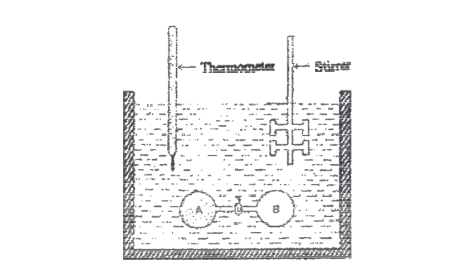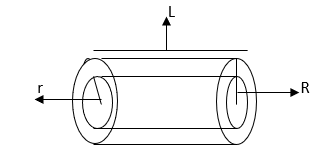The first law of thermodynamics

Question one
(a) (I) Define the first law of thermodynamics and give the expression in which it is based defining all the terms involved. [3 marks]
ANSWER
= The first law of thermodynamic states that, Energy can neither be created nor destroyed, if it disappears in one form, it must appear in some other equivalent form.
ΔU = a + w
where a, = Heat absorbed by the system
w, = Work done on the system.
(ii) Differentiate between thermochemistry and thermodynamics. [3 marks]
= Thermochemistry is a branch of chemistry which deals with the investigation of energetics and feasibility of chemical reactions and physical changes, while Thermodynamic is the branch of science dealing with the relations between energy, heat and work and the accompanying changes in the nature and behavior of various substances around.
(b) State the third law of thermodynamics. [2 marks]
= The third law of thermodynamic states that, the entropy of a pure and perfectly crystalline solid tends to zero as temperature tends to absolute zero.
(c) At 1 atmosphere, Toluene (methyl benzene) boils at 110oC and its latent heat of vaporization is 33470 J/mol. Estimate the entropy change when Toluene is heated from 100 0C to
725.4 0 Rankine assuming that in this temperature range the heat capacities (Cp) of the liquid and the vapor are 120 JK-1mol-1 and 180 JK-1mol-1 respectively. [6 marks]
ANSWER.
Convert to degree Celsius to Rankine.
From 100°c → 110°c = 725.4° Rankine, (K)
From 100° → 110°
T1 = 100°c → 373K
T2 = 100°c →373K
CP = 120JK-1mol-1
ΔS1 ⇒ CPIn(T2/T1)
ΔS1 ⇒ 120In(383/373) = 3.17JK-1mol-1
At 110°c
ΔS2 ⇒ QH/T2 ⇒ 33470/383 = 87.39JK-1mol-1
From 110°c → 725.4° Rankine
ΔS3 ⇒ CPIn(T2/T1) ⇒ in this case T2 = 403.3, T1 = 383 and CP = 180.
ΔS3 ⇒ 180In(403.3/383) = 9.30JK-1mol-1
ΔS = ΔS1 + ΔS2 + ΔS3 ⇒ 3.17 + 87.39 + 9.30 = 99.86 JK-1mol-1
(d) Show that Cp and Cv are connected by the equation CP-CV = R where CP and CV are the specific heats of a gas at constant Pressure and volume respectively and R is the universal gas constant (R = 8.314 Jmol-1K-1). [4 marks]
Cp and Cv are related by the equation that Cp-Cv =R
From the first law of thermodynamics
H=U+PV…………………………… (i)
Given that PV=nRT for one mole of (n=1) then PV= RT
H =U+RT
Taking differentials on both sides, we get
dH=dU+RdT………………………(ii)
From dU = dQ+PdV at constant volume, PdV=0
Then du=dQ
From Cv=𝑑𝑄𝑣 then dQv = CvdT
𝑑𝑇
du=CvdT (At constant volume)………………. (iii)
At constant pressure
dH = dQ =CpdT
ie dH =CpdT……………………(iv)
Substituting for dU and dH from equation (iii) and (iv) to equation (ii)
CpdT=CvdT+RdT
CpdT= (Cv+R) dT
Cp =Cv+R
Cp-Cv=R


